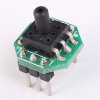carl
True Classic
Sounds like it has already been covered, but from my understanding there is definitely a zone of low pressure over the engine bay. Why do I think this? The other day I was driving with my engine cover not properly latched, and I watched the hatch rise up at high speeds. You can probably duplicate this at home
This is funny since it would take a lot less time to not latch my rear trunk than to tape a bunch of yarn on it! The rear trunk lid is seriously heavy for such a small panel so there has to be a lot of lift to overcome the weight of that thing.
I noticed yesterday that since the lower portion of the rear trunk near where the jack sits is rusted out, that opening could be a source of ducted air to the carbs.


